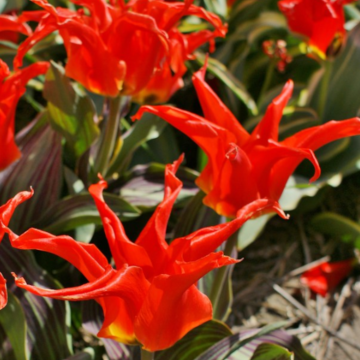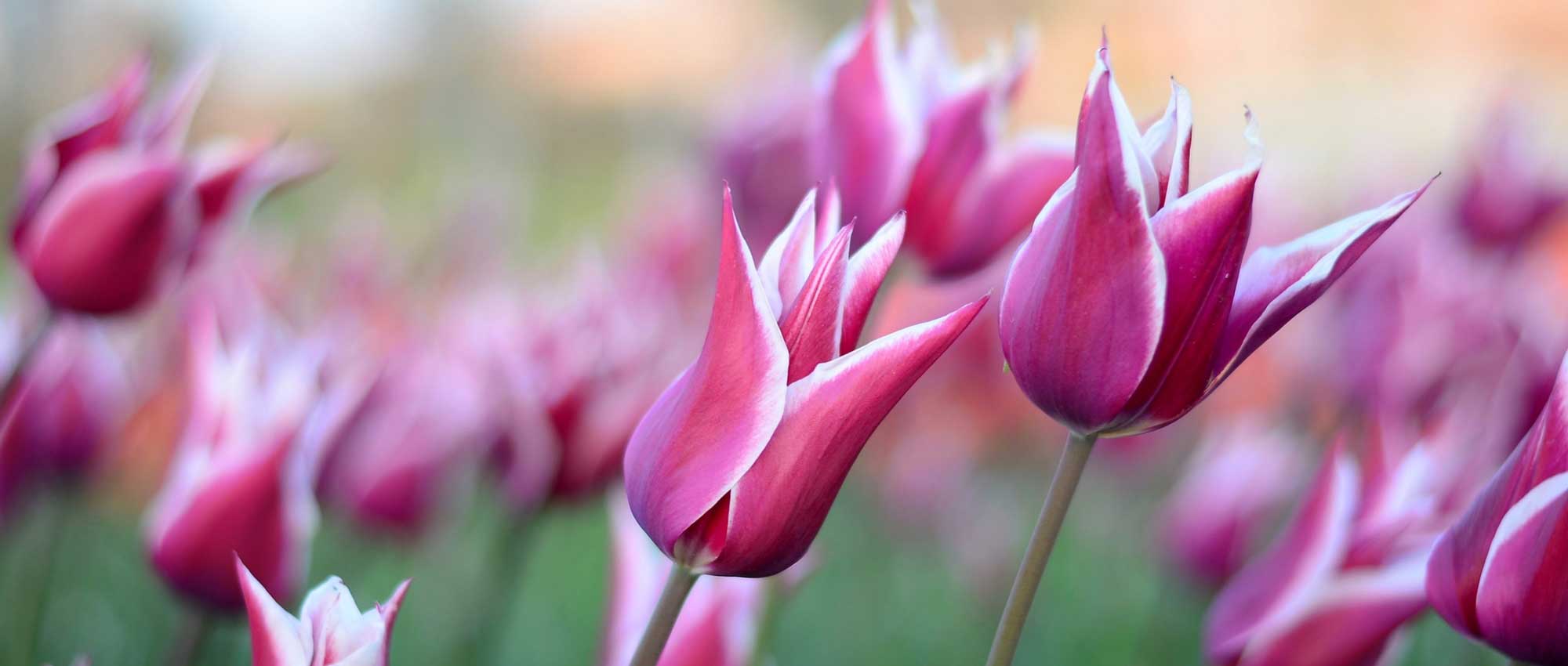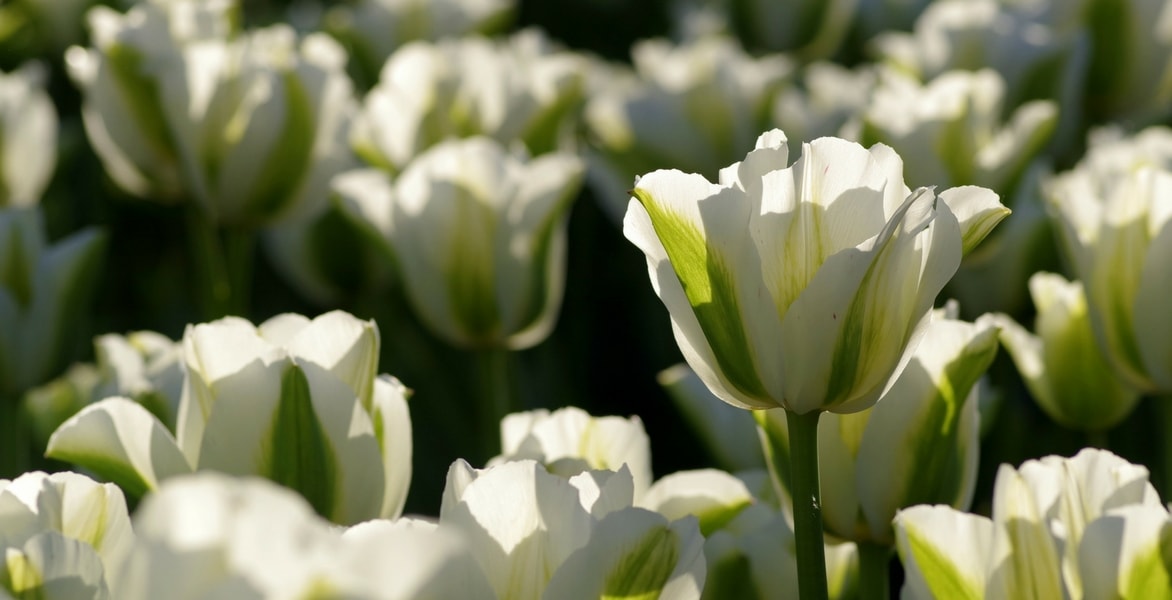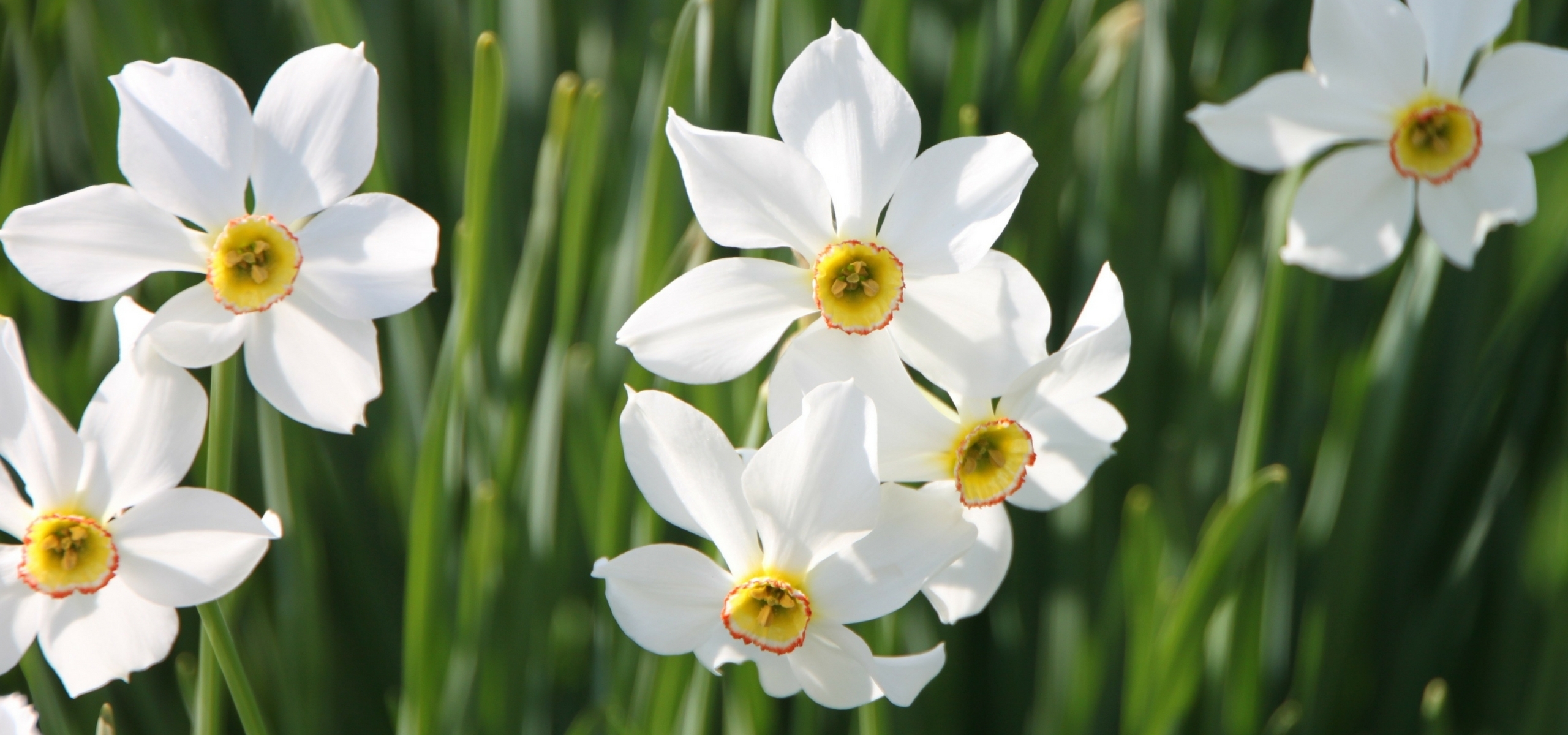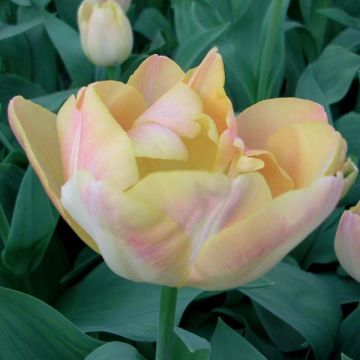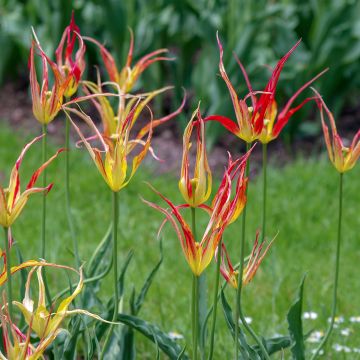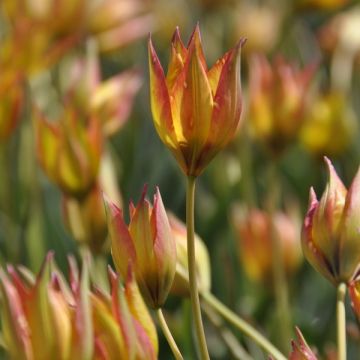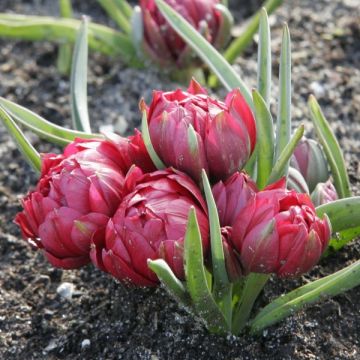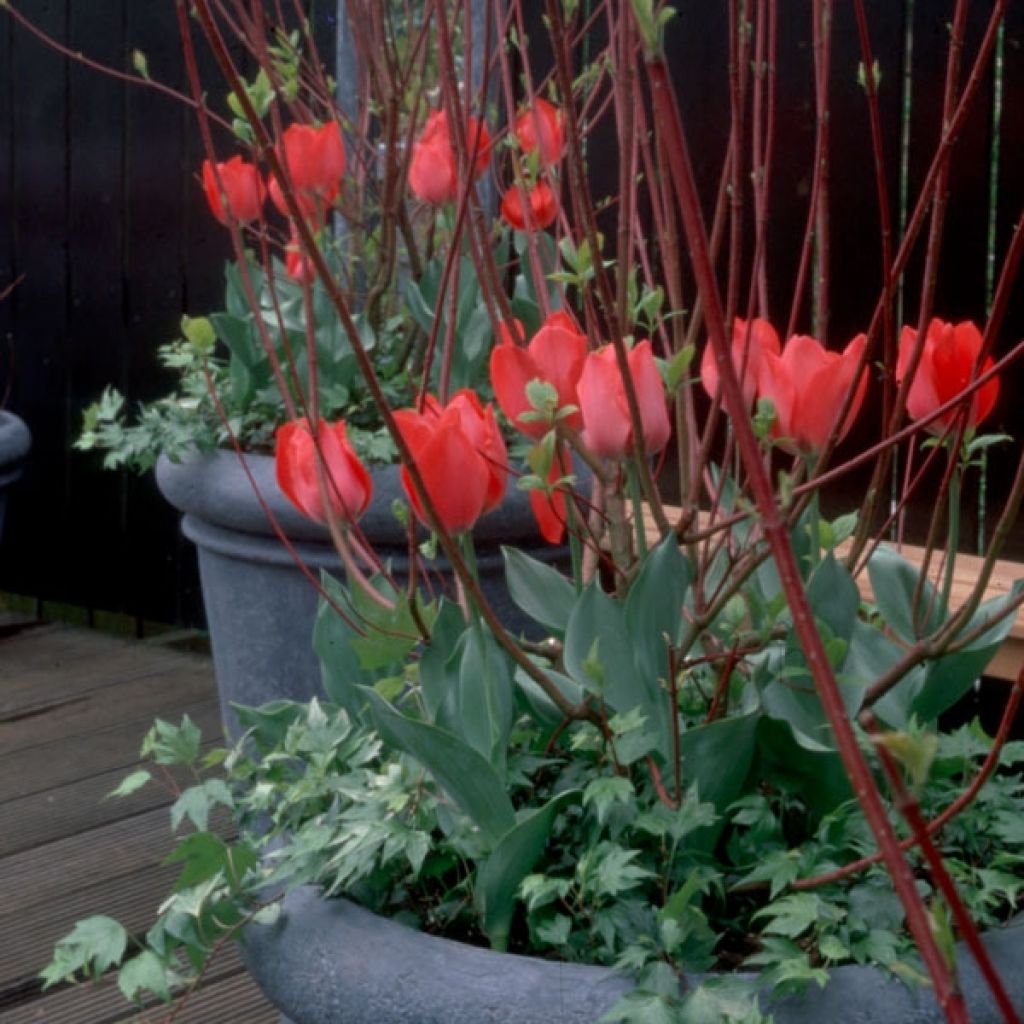

Tulipe Triomphe Cassini
Tulipa 'Cassini'
Tulipa Triumph Cassini
Triumph Tulip 'Cassini'
Special offer!
Receive a €20 voucher for any order over €90 (excluding delivery costs, credit notes, and plastic-free options)!
1- Add your favorite plants to your cart.
2- Once you have reached €90, confirm your order (you can even choose the delivery date!).
3- As soon as your order is shipped, you will receive an email containing your voucher code, valid for 3 months (90 days).
Your voucher is unique and can only be used once, for any order with a minimum value of €20, excluding delivery costs.
Can be combined with other current offers, non-divisible and non-refundable.
Why not try an alternative variety in stock?
View all →This plant carries a 6 months recovery warranty
More information
We guarantee the quality of our plants for a full growing cycle, and will replace at our expense any plant that fails to recover under normal climatic and planting conditions.
Does this plant fit my garden?
Set up your Plantfit profile →
Description
The 'Cassini' Triumph Tulip is an unmissable red variety, always planted since its creation in 1942 in the Netherlands. It blooms from April to May, right after the early tulips, in the form of large flowers with intense red colour and classic shape. Its flowers are perched on very strong stems that withstand bad weather. Perfect for bouquets or stunning borders.
The 'Cassini' Tulip belongs to the Lily family. Originally horticultural, it is currently classified in the 'Triumph' group, whose main characteristic is to have narrow cup-shaped flowers. It belongs to a lineage of hybrids resulting from the cross-breeding between early single varieties and late single Tulips. The result gives an exceptional combination: health, vigour, and early flowering. This 'Cassini' tulip is of medium size and offers a cup-shaped flower. It will reach a height of 45cm (18in) when in bloom. Perched on sturdy stems, above the broadly lanceolate leaves, the bright flowers show six "petals" (more precisely tepals) of an undeniable red. The flowering takes place in April. It is an herbaceous tulip that has good hardiness.
The 'Cassini' Triumph Tulip is well suited for large mass plantings, when planted in mass, and when combined with other tulips (white, pink, late, early) it maximizes the duration of flowering in the mass plantings. It can also be placed along borders, in flower beds, as well as in pots and containers. This tulip enhances balconies and terraces very well. They are also lovely cut flowers. It pairs well, for example, with 'Mount Hood' daffodils or Narcissus poeticus 'Albus Plenus Odoratus'.
After flowering, their foliage becomes unsightly. We recommend planting Heuchera, Tiarella, Brunnera, Bleeding Heart, and Cypress Spurge in the foreground of your mass plantings. Their foliage will enhance the colours of your tulips and, during the season, they will elegantly mask their yellowed leaves.
Plant habit
Flowering
Foliage
Botanical data
Tulipa
Triumph
Cassini
Liliaceae
Triumph Tulip 'Cassini'
Cultivar or hybrid
Other Single Tulips
View all →Planting and care
Plant the bulbs in the autumn, from September to December, at a depth of 15cm (6in), spacing them 10cm (4in) apart. The planting should be done in ordinary soil, slightly acidic, neutral, or slightly chalky, loose, well-worked, and well-draining. Never add poorly decomposed manure or compost to the planting soil, as this could cause the bulbs to rot. The Triumph Tulip 'Cassini' will grow well in moist to dry soil. Plant it in a sunny or partially shaded location. After flowering, it is preferable to remove the fruits to avoid exhausting the plant.
Planting period
Intended location
Care
Planting & care advice
This item has not been reviewed yet - be the first to leave a review about it.
Similar products
Haven't found what you were looking for?
Hardiness is the lowest winter temperature a plant can endure without suffering serious damage or even dying. However, hardiness is affected by location (a sheltered area, such as a patio), protection (winter cover) and soil type (hardiness is improved by well-drained soil).

Photo Sharing Terms & Conditions
In order to encourage gardeners to interact and share their experiences, Promesse de fleurs offers various media enabling content to be uploaded onto its Site - in particular via the ‘Photo sharing’ module.
The User agrees to refrain from:
- Posting any content that is illegal, prejudicial, insulting, racist, inciteful to hatred, revisionist, contrary to public decency, that infringes on privacy or on the privacy rights of third parties, in particular the publicity rights of persons and goods, intellectual property rights, or the right to privacy.
- Submitting content on behalf of a third party;
- Impersonate the identity of a third party and/or publish any personal information about a third party;
In general, the User undertakes to refrain from any unethical behaviour.
All Content (in particular text, comments, files, images, photos, videos, creative works, etc.), which may be subject to property or intellectual property rights, image or other private rights, shall remain the property of the User, subject to the limited rights granted by the terms of the licence granted by Promesse de fleurs as stated below. Users are at liberty to publish or not to publish such Content on the Site, notably via the ‘Photo Sharing’ facility, and accept that this Content shall be made public and freely accessible, notably on the Internet.
Users further acknowledge, undertake to have ,and guarantee that they hold all necessary rights and permissions to publish such material on the Site, in particular with regard to the legislation in force pertaining to any privacy, property, intellectual property, image, or contractual rights, or rights of any other nature. By publishing such Content on the Site, Users acknowledge accepting full liability as publishers of the Content within the meaning of the law, and grant Promesse de fleurs, free of charge, an inclusive, worldwide licence for the said Content for the entire duration of its publication, including all reproduction, representation, up/downloading, displaying, performing, transmission, and storage rights.
Users also grant permission for their name to be linked to the Content and accept that this link may not always be made available.
By engaging in posting material, Users consent to their Content becoming automatically accessible on the Internet, in particular on other sites and/or blogs and/or web pages of the Promesse de fleurs site, including in particular social pages and the Promesse de fleurs catalogue.
Users may secure the removal of entrusted content free of charge by issuing a simple request via our contact form.
The flowering period indicated on our website applies to countries and regions located in USDA zone 8 (France, the United Kingdom, Ireland, the Netherlands, etc.)
It will vary according to where you live:
- In zones 9 to 10 (Italy, Spain, Greece, etc.), flowering will occur about 2 to 4 weeks earlier.
- In zones 6 to 7 (Germany, Poland, Slovenia, and lower mountainous regions), flowering will be delayed by 2 to 3 weeks.
- In zone 5 (Central Europe, Scandinavia), blooming will be delayed by 3 to 5 weeks.
In temperate climates, pruning of spring-flowering shrubs (forsythia, spireas, etc.) should be done just after flowering.
Pruning of summer-flowering shrubs (Indian Lilac, Perovskia, etc.) can be done in winter or spring.
In cold regions as well as with frost-sensitive plants, avoid pruning too early when severe frosts may still occur.
The planting period indicated on our website applies to countries and regions located in USDA zone 8 (France, United Kingdom, Ireland, Netherlands).
It will vary according to where you live:
- In Mediterranean zones (Marseille, Madrid, Milan, etc.), autumn and winter are the best planting periods.
- In continental zones (Strasbourg, Munich, Vienna, etc.), delay planting by 2 to 3 weeks in spring and bring it forward by 2 to 4 weeks in autumn.
- In mountainous regions (the Alps, Pyrenees, Carpathians, etc.), it is best to plant in late spring (May-June) or late summer (August-September).
The harvesting period indicated on our website applies to countries and regions in USDA zone 8 (France, England, Ireland, the Netherlands).
In colder areas (Scandinavia, Poland, Austria...) fruit and vegetable harvests are likely to be delayed by 3-4 weeks.
In warmer areas (Italy, Spain, Greece, etc.), harvesting will probably take place earlier, depending on weather conditions.
The sowing periods indicated on our website apply to countries and regions within USDA Zone 8 (France, UK, Ireland, Netherlands).
In colder areas (Scandinavia, Poland, Austria...), delay any outdoor sowing by 3-4 weeks, or sow under glass.
In warmer climes (Italy, Spain, Greece, etc.), bring outdoor sowing forward by a few weeks.






























